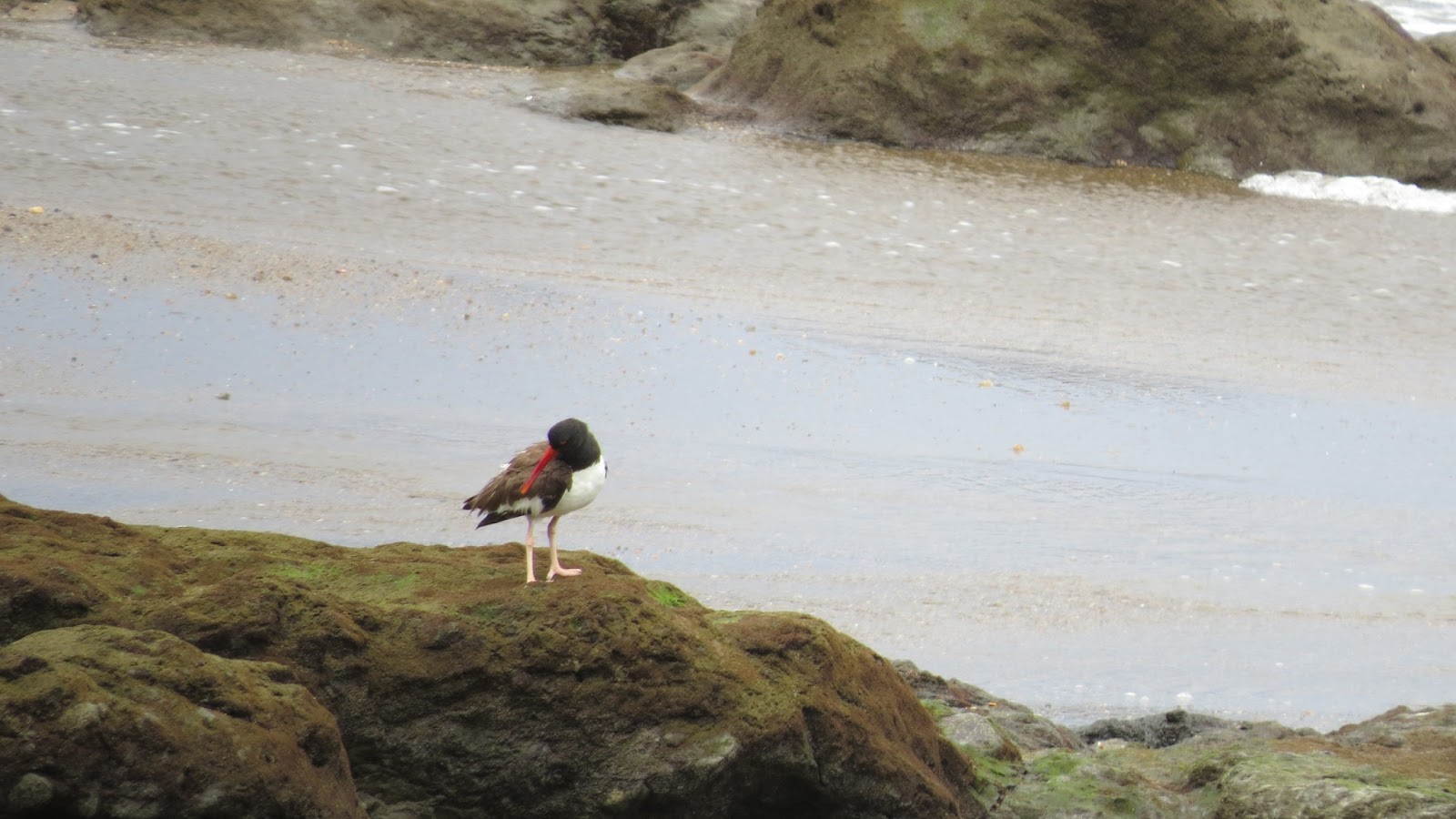I had some qualms about a return trip of over 100km in a small boat downriver and out into the Pacific Ocean, in order to visit Corcovado National Park. Our experience on the upriver trip and observations of other groups waiting for boats gave me confidence, so we booked a trip 2 days later. This time, we were going to walk for 4 hours. Rain delayed our departure but we landed at San Pedrillo, after an exciting bumpy ride through a low ocean swell.
We walked to the Ranger Station and then across a small creek to a trail behind the beach. After lunch, we walked to a waterfall. Walking was easy, mostly flat. Two other couples were with us, one Costa Rican, the other American. Our young guide, Oscar, was knowledgeable and the boat captain, Kayla (? spelling), made us feel safe.
 |
| San Pedrillo Ranger Station & lunch stop - very clean |
 |
| American Oystercatcher |
 |
| Brown Pelican |
Near this lagoon we saw an adult Common/Mangrove Hawk.
Some trees had very buttressed roots.

 Oscar found a Forest Rocket Frog.
Oscar found a Forest Rocket Frog.
The trail took us back to the shore where we disturbed this White-nosed Coati digging for crabs.

He soon returned to his activity and was last seen upended (definitely male) head down a hole.
Back into the rainforest, we had good views of Spider Monkeys, including a baby with circus ambitions and no fear.
The waterfall was not impressive at this end of the dry season, though we did see a Bare-throated Tiger-heron fishing and a hummingbird nest with tiny baby.

David photographed one of the few unfriendly aspects of this rainforest - we saw no lawyer vines, no stinging trees (though there are such trees at La Selva if you know where to look), no leeches, almost no mosquitoes and found no ticks.
On the way through the mangroves, Oscar was keen to show us a Common Potoo. Can you see it?
And the mangroves at low tide were rather grand.

La Perle has a cafe and shop above the boat ramps. We spent quite some time looking at these masks as we wanted to buy some. They are made by a tribe some 25 kms away at Boruca and the diablo masks are related to traditional ceremonies. Some more touristy masks just feature animals. Most are carved in balsa; some in teak. We had seen them elsewhere and could not find one as interesting as those in Shelter from the Storm. The largest masks sell here for $100 and we would have bought one if we were sure Customs would let us keep it (or not charge a lot for fumigation).














No comments:
Post a Comment